Table of Contents
With the Coronavirus currently wreaking havoc in most European nations, any method that can be implemented to save lives is more than welcome. The use of ventilators is brilliant, given that Covid 19 presents pneumonia. Ventilators will assist patients in breathing as doctors administer drugs to weaken and finally kill the virus.
Post-COVID-19, various ventilators have been used to support patients with severe respiratory issues. Ventilators are classified based on their complexity, application, and setting. Here are some commonly used ventilators post-COVID-19:
- Invasive Ventilators (Mechanical Ventilators):
- ICU Ventilators:
- Examples: Puritan Bennett 980, Dräger Evita Infinity V500, Hamilton G5
- Portable ICU Ventilators:
- Examples: Hamilton T1, Medtronic Newport HT70, Philips Trilogy Evo
- ICU Ventilators:
- Non-Invasive Ventilators:
- CPAP and BiPAP Machines (Non-Invasive Positive Pressure Ventilation – NIPPV):
- Examples: ResMed AirSense 10, Philips Respironics DreamStation, Fisher & Paykel SleepStyle
- High-Flow Nasal Cannula (HFNC):
- Examples: Fisher & Paykel AIRVO 2, Vapotherm Precision Flow
- CPAP and BiPAP Machines (Non-Invasive Positive Pressure Ventilation – NIPPV):
- Transport Ventilators:
- Designed for moving critically ill patients.
- Examples: Hamilton T1, Zoll EMV+ Ventilator
- Home Ventilators:
- Portable Home Ventilators:
- Examples: Philips Trilogy 100, ResMed Astral, Ventec Life Systems VOCSN
- Portable Home Ventilators:
These ventilators continue to be essential in managing patients with severe respiratory failure, including those with long-term complications from COVID-19 (long COVID). The selection depends on the patient’s condition, location, and required support level.
What is a ventilator for breathing?
A ventilator is a machine used by patients who experience difficulties breathing, typically because of an infection that inhibits the normal working of the lungs. The machine provides life-sustaining oxygen by pumping breathable air in and out of the sick individual’s lungs. Most importantly, the ventilator can regulate breathing even if the patient cannot inhale or exhale.
How Does A Ventilator Work?
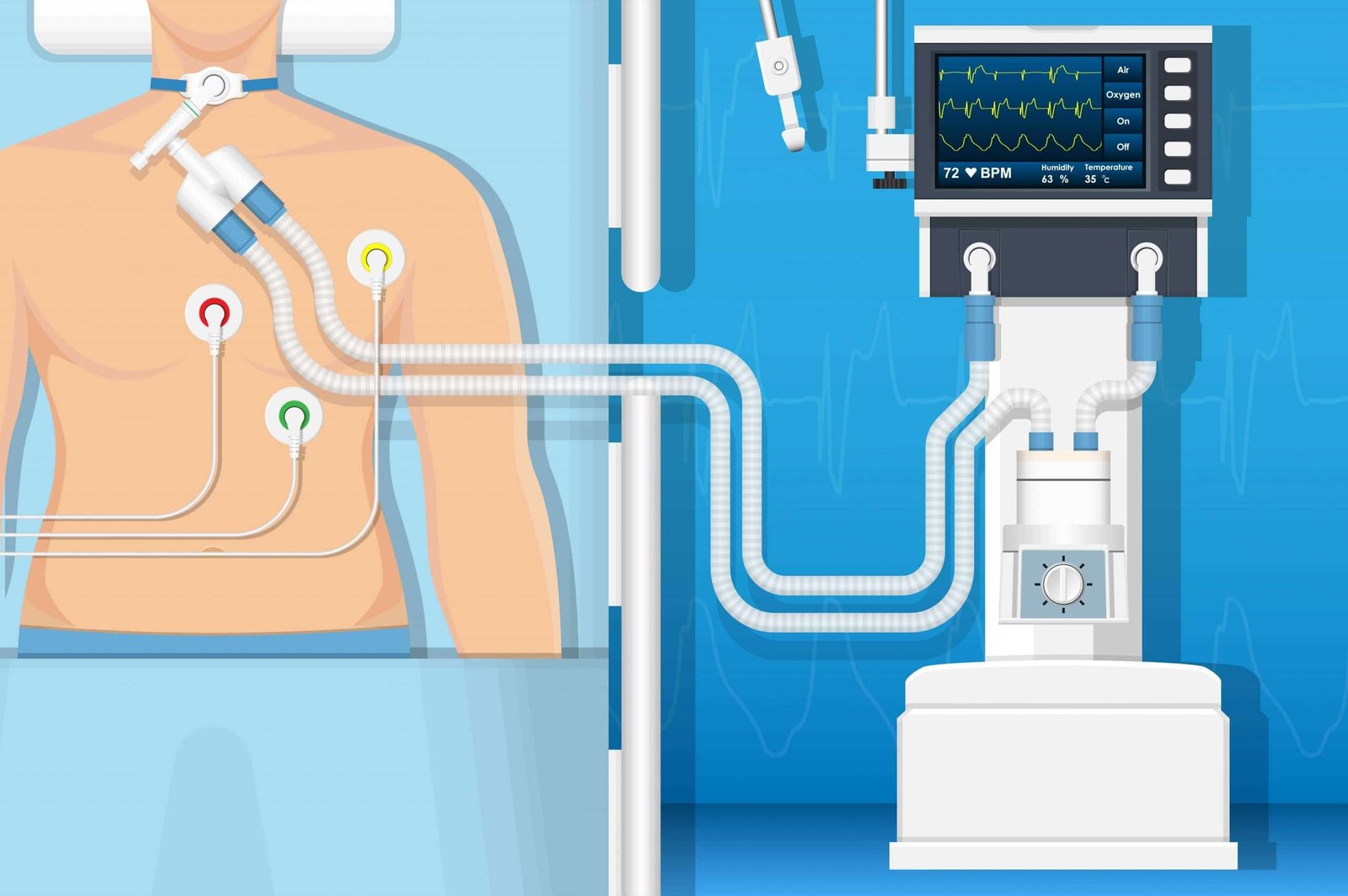 The ventilator is usually placed on a person through a tube passed through the nose or mouth and then goes to the windpipe. It then blows air and oxygen into the individual’s lungs. And the reason why it is preferred compared to masks is that it delivers high amounts of oxygen.
The ventilator is usually placed on a person through a tube passed through the nose or mouth and then goes to the windpipe. It then blows air and oxygen into the individual’s lungs. And the reason why it is preferred compared to masks is that it delivers high amounts of oxygen.
While in the lungs, the ventilator can also help to hold the lungs open, thus preventing the air sacs from collapsing. And the tube inserted in the windpipe enables mucus removal from people with weak coughs.
How Ventilators Respiratory Machine support patients with COVID-19 infection
People infected with COVID-19 will most likely develop a cough and a fever, which happens when the infection has reached the respiratory tract. The lining of the latter will be injured, leading to inflammation, and if it worsens, it will go past the lining of the airways straight to the gas exchange units.
When the latter becomes infected, they will pour inflammatory material into the air sacs at the bottom of the lungs. The air sacs will then become inflamed. Once your lungs are filled with inflammatory material, they won’t be able to provide enough oxygen to the bloodstream; thus, the body cannot get rid of carbon dioxide nor take in oxygen.
So, the ventilators assume responsibility for the respiratory organs and pump oxygen into the blood to be used by the vital organs. The ventilator provides the much-needed oxygen directly into the lungs and, in the process, gets rid of the toxic carbon dioxide.
Top 11 Ventilators Respiratory Machines in 2024
Here are the Top 11 Ventilators Respiratory Machines to Prevent Coronavirus Deaths.
1. Maquet Servo-i Ventilator ($6,500.00)

The Maquet Servo-I Ventilator is versatile and can be used by toddlers and adults. Doctors using this unit can see their patients’ diaphragm activity on the provided screen and improve the patients’ ventilator synchrony and comfort. By initiating the above, there will be no need for sedation, which might lead to shorter weaning periods.
The Maquet Servo-i incorporates the relevant modes to enable effective treatment, a fact clear through the provided range of tools that assist doctors in stabilizing their patients and eventually weaning them off the ventilator. One of the tools is Heliox, which helps minimize turbulence and improve the elimination of CO2.
The above is especially crucial for Covid 19 patients because their lungs face difficulties eliminating the toxic CO2, which might lead to death if not taken care of.
The stress index also assists in detecting and preventing harmful ventilatory patterns; another critical feature of the ventilator is the HBO conditional, which offers ICU-quality ventilation. The above offers full monitoring capabilities and provides patients with ventilation to a depth of 30 meters; remember that this feature can be used on all categories of patients.
2. GE Healthcare Carescape R860 ($5,555.00)

Carescape R860 offers a unique edge to clinicians handling ventilated patients. The unit can provide information about the ventilated patients’ past, present, and future state and has been equipped with an innovative but very intuitive user interface. Therefore, a few significant benefits are aligned if you adopt the Carescape R860 as your ventilation tool.
For example, you can use advanced tools that tailor care to meet the patient’s needs. The unit has also been equipped with customizable settings and protocols to help the clinicians assess and provide the necessary respiratory therapy.
And given that COVID-19 has been determined to wreak lung havoc, Carescape R860 allows you to direct your efforts to lung protection via the FRC. The lung protection tool enables one to calculate FRC, giving you the data necessary to determine the optimal peep setting for your patient.
Toddlers are very delicate regarding respiratory infections; without proper care, they will quickly lose the battle. The Carescape R860, therefore, has the necessary ventilation features to help care for neonates. Clinicians can, thus, set the rate and pressure of the ventilator to help prevent intubation and support the baby non-invasively.
3. Resmed Astral 150 ($4,244.00)

Unlike the other ventilators that kids and adults can use, the Resmed Astral is best utilized by adults. Clinicians will, therefore, be able to access patient data as the unit features a patient monitoring tool. Resmed has been constructed with a compact yet intuitive design, providing an impressive power-to-weight ratio.
The ventilator can also be monitored remotely, so patients can use it from their comfort zones. Even more important is that your patients can carry the ventilator wherever they are traveling, given that it can hold power for up to 16 hours. Since older individuals mainly utilize the unit in society, the manufacturer has been sure to include user-friendly features.
Such as the program naming options, the big button technology, and an easy and quick setup assistant. Don’t let its compact design deceive you into thinking that the unit is less effective; on the contrary, you can access sophisticated technology when performing noninvasive and invasive ventilation.
For versatility of use and to provide patients and clinicians with a wholesome experience, the unit comes equipped with significant accessories, such as the Astral external battery, which offers up to 8 hours of backup power if it has been fully charged. The ventilator has a Resmed connectivity module for remote access to crucial ventilation data, which helps manage and improve patient care.
4. Resmed Astral 100 ($3,999.00)
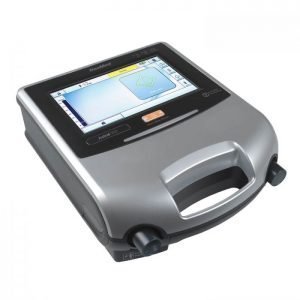
The Astral 100 is similar to the Astral 150 regarding features and functionality. The unit can, therefore, be attached to a device trolley to facilitate ease of use, whether in the hospital or at home. Using it does not involve a steep learning curve; users can carry it with them when duty calls as it has been equipped with remote monitoring capabilities.
While in transit, you don’t have to worry about the ventilator losing power, as it can contain power for up to 16 hours. Patients with respiratory problems can access flexible therapy options such as AutoEPAP and ResMed IVAPS, which could be beneficial for COPD patients.
Astral 100 has been designed to cater to various respiratory disorders, given its ability to offer invasive and noninvasive ventilation procedures. Astral 100 is not intended for use with toddlers, and given the age bracket it covers and its likelihood to be adopted and used at home, it has been made with a very intuitive design and operation mode.
For example, it features program naming options and has incorporated big-button technology. Patients can, therefore, enjoy care in the comfort of their homes just like they were in the hospital.
5. Resmed Stellar 150 ($4,999.00)

No matter your respiratory needs, the Stellar 150 can handle them and does not discriminate against kids or adults but accommodates both. The ventilator can be adapted for either home or hospital use; therefore, patients suffering from OHS, COPD, or NMD can use it from their homes, and those who require NIV while in the hospital will also benefit from the Stellar 150.
Moreover, each patient’s needs will be catered to; for example, the unit offers an intelligent backup rate to provide backup breaths according to the patient’s needs. Users have also received an AutoEPAP option to maintain upper airway patency.
The unit also offers real-time monitoring capabilities so clinicians can focus on other tasks while glancing at the patient’s progress via the intuitive interface.
Other significant features of the unit that will most probably interest you are its pediatric capabilities, which enable it to cater to children of up to 13 kgs. Clinicians can also utilize the dual program feature necessary to set running ventilation programs for the day or night or the rest and active periods.
The equipped internal battery can hold power for up to 2 hours of active use, and it has also incorporated the DC-DC converter that makes its use versatile, including inside a car.
6. Resmed Stellar 100 ($1,999.00)

Resmed Stellar 100 is a universal healthcare ventilator device designed to simplify clinicians’ work through intuitive menus, making the setup process relatively easy. At the same time, the real-time display takes the workload off the clinicians’ hands, letting them glance at the intuitive screen as they carry out other errands.
And just because you have a respiratory problem does not mean you have to stay confined in the home or hospital bed. If you have been provided with the Resmed Stellar 100, you can continue with your lifestyle but with your ventilator whenever needed. Its compact and lightweight design and use-to-use controls have made the above possible.
Given its combination of intelligent technologies, the Stellar 100 ventilator offers various therapy modes. Some of these are the rise and fall times, the Vsync and Ti-Control, and the five trigger and cycle levels, which allow clinicians to fine-tune settings for a patient’s situation.
The ventilator manufacturer also seeks to make life manageable by providing a mobility bag that allows users to travel with their units without being too conspicuous. If your clinicians need home monitoring, the ventilator has a remote alarm II and a hospital alarm system cable.
7. Versamed iVent 201 Ventilator from GEs ($3,500.00)

A versed iVent ventilator has been designed to cater to children and adults, including the different patient acuity levels. The use of the iVent has not been restricted within the hospital walls, and clinicians can recommend them to their patients for use at home. The unit features a relatively intuitive and straightforward design to encourage efficiency and ease of use.
Another significant feature that patients stand to benefit from is such as apnea back ventilation. The latter’s advantage is that it offers a continuous monitor to check whether the airway is open, in which case the clinician can access the tidal volumes the patient receives via the display interface.
Another significant feature that has been equipped in the unit is the Adaptive Bi-Level option, a pressure control mode of ventilation with a user-defined backup rate and additional termination criteria for superior patient comfort. The above allows ventilation in the presence of variable leaks like the one customarily seen when using mask ventilation.
8. Puritan Bennett 980 Ventilator from Medtronic ($10,999.00)
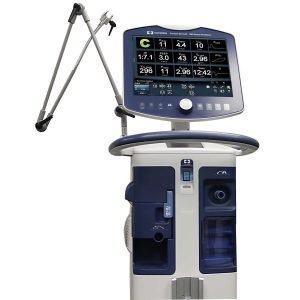
With the Puritan Benett 980 ventilator, your patients can expect to achieve an almost natural breathing pattern, which has been facilitated by the innovative breathing delivery technology. The ventilator features a simple and easy-to-use interface; what’s more, users can customize their display to enhance workflow.
If you want to gain more insight into your patient’s ailment, you won’t need to go down to the registry instead of pausing whatever you are doing on the interface and reviewing the historical data. Given its large screen, you don’t have to be near the unit to get the information you want, as you can still view it from across the room.
The unit also features an intelligent system designed to help the patients dictate the breath they receive using the PAV+ software. Clinicians have also been free to select the right level of support for their patients and can compensate for leaks using the leaked software.
9. Puritan Bennett 840 Ventilator from Medtronic ($6,999.00)
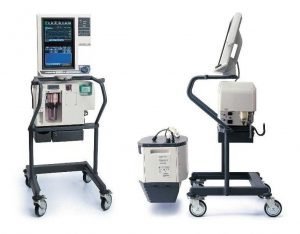
A ventilation system that feels artificial can be pretty uncomfortable. That is why natural always takes the lead, as it offers a more natural feel even as it assists the respiratory tree. Unlike conventional mechanical ventilation, the Purita Benett has been equipped with the PAV+ software used to manage the work of breathing, thus supporting more natural breathing.
Even better, the unit can support all ages and stages of respiratory issues. Clinicians dealing with kids and adults can use the same machine for toddlers weighing three hundred grams.
The ventilation unit also tends to offer a steep competitive edge over its competitors. The main reason is that it has an upgradeable pathway. This feature makes it a better alternative when considering value for your money and future use.
10. Newport e360 Ventilator from Medtronic ($7,099.00)
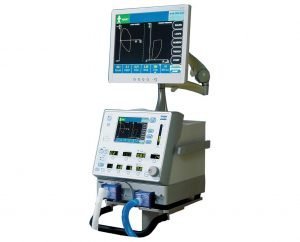
The Newport e360 Ventilators Respiratory unit aims at making sophisticated ventilation technology simple. By adopting this unit, you can utilize the different equipped modes and the extensive monitoring features built in a compact package to enable an easy transition from invasive to noninvasive ventilation.
The unit has also been equipped with an intuitive interface, where you can access the simple touch turn to accept all the relevant adjustments, which helps prevent accidental changes. Moreover, the graphical interface feature merges extensive monitored data and advanced functions in simple-to-navigate screens.
The unit is, therefore, perfect for noninvasive ventilation and extensive monitoring and provides the all-important weaning tools.
11. Newport HT70 from Medtronic ($3,255.00)

The Newport HT70 ventilator has a relatively simple, compact, and new design equipped with exceptional capabilities to handle respiratory disorders effectively. Among its significant features is the non-airway flow sensor, which offers expanded monitoring, with alarms and the choice of flow or pressure.
Another vital feature that makes the unit easy to use when not in the hospital or at home is its battery time estimator, which makes it easy to use at home and away. Even more important is that the incorporated cylinder uses a time calculator that helps to estimate how long the available oxygen will last while on the go.
Other significant features can be easily accessed on the full-color touch screen, offering easy control access.
Conclusion
Ventilators Respiratory is a sure way of keeping patients suffering from COVID-19 alive because the machines are instrumental in removing carbon dioxide and ensuring that the body gets enough oxygen. The above-reviewed ventilators are, therefore, effective and can be utilized in different settings, whether at home or in the hospital. Moreover, some ventilators can save the fragile lives of young ones, including toddlers.
Skeptical Scalpel is a retired surgeon and was a surgical department chairman and residency program director for many years. He is board-certified in general surgery and critical care and has re-certified in both several times. He blogs at SkepticalScalpel.blogspot.com and tweets as @SkepticScalpel.



Amanda
Hello,
I am inquiring about an order I have placed. Please advise as to where the order is.
Raz HOCHMAN
What you can offer as Invasive and nun Invasive /we need 4 units to Ghana as a dealers of Medical Equipment .
Raz Hochman